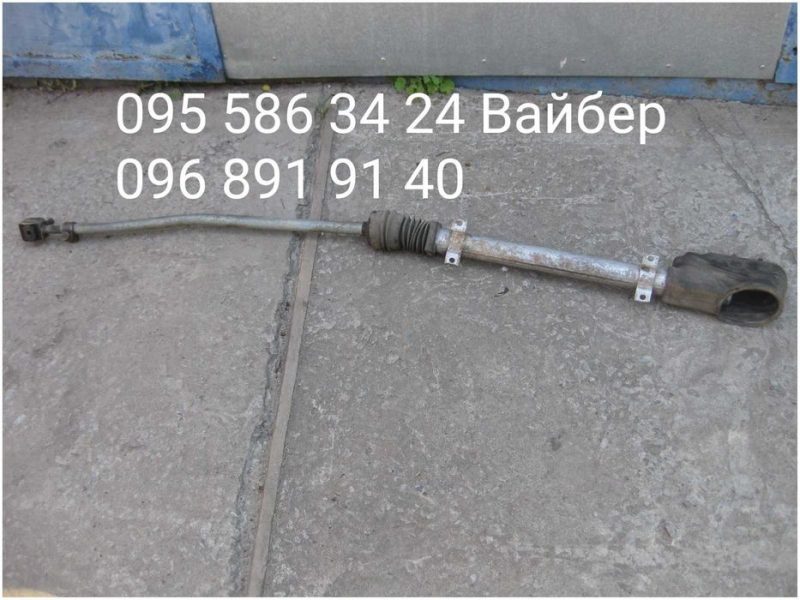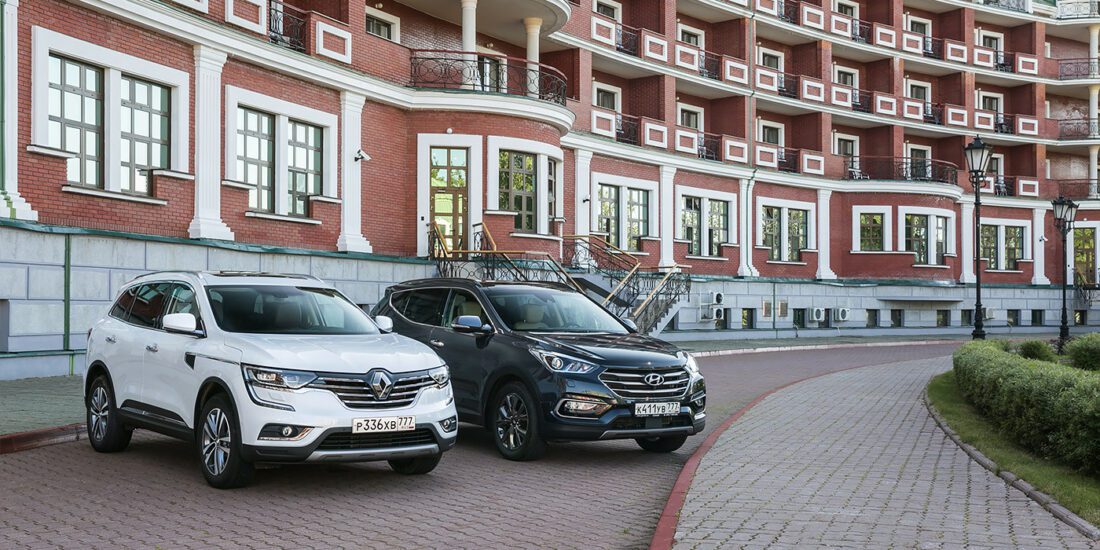
Test drive Renault Koleos vs Hyundai Santa Fe
Koreans and French have diametrically opposed views of what a large family car should be in places. And that's great
The girl in the back seat pulls the door handle right in front of the rushing bus, and nothing happens - the new fourth generation Hyundai Santa Fe locks the lock. This advertising plot is familiar to everyone who followed the World Cup, and there is no fantasy in it - the future crossover will receive a safe exit function paired with a rear passenger presence control system.
Sales of the new Santa Fe are expected to begin in the fall, and the car is unlikely to be cheap. The future crossover will offer even more family values, although the current third in this sense can be called quite attractive. In terms of a set of equipment and convenience, it is still interesting and in this sense it can compete only with last year's premiere of Renault Koleos, which almost ideally corresponds to the current Santa Fe both in terms of dimensions and characteristics. The focus is on running versions with good equipment and gasoline engines of 2,4 and 2,5 liters.
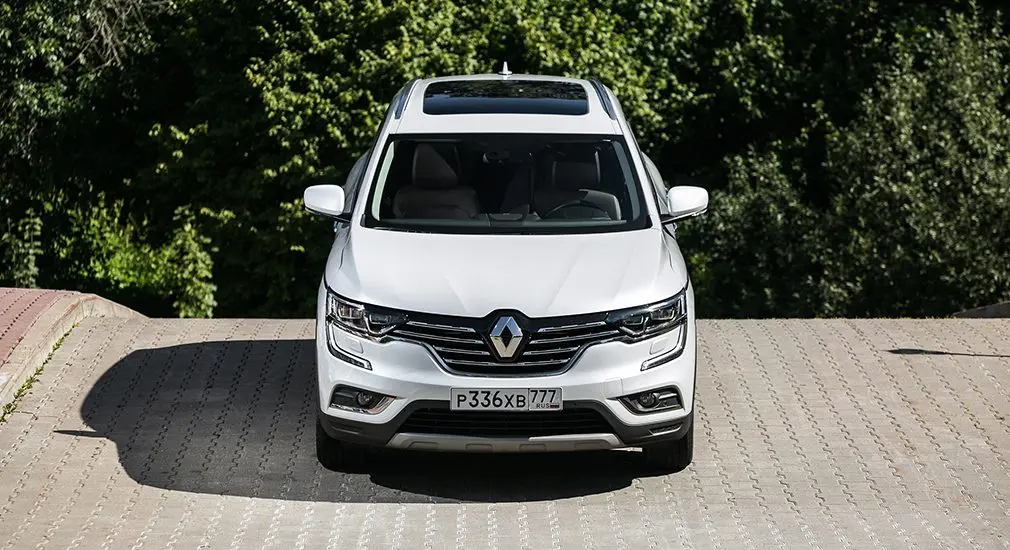
For a year of sales, Renault Koleos did not have time to become familiar. For a brand that is considered budgetary in Russia, this is a real flagship: big, immodest looking and very European in nature. If the French have sorted out with the external decor, then quite a bit. It is clear that the wide bends of the LED strips, the abundance of chrome and decorative air intakes correspond, rather, to the style of the car for the Asian markets, but on Koleos all this jewelry looks quite modern and technologically advanced.
The third generation Hyundai Santa Fe also has a completely European look, albeit generously decorated with chrome and LEDs. There is no Asian brace for a long time - a restrained appearance, a neat drawing of a radiator grille, modern optics and a little playful taillights, as if supporting the shape of wide stampings on the sidewalls of the stern. Against this background, Renault's LED brackets and the mustache of its taillights look much more pretentious.
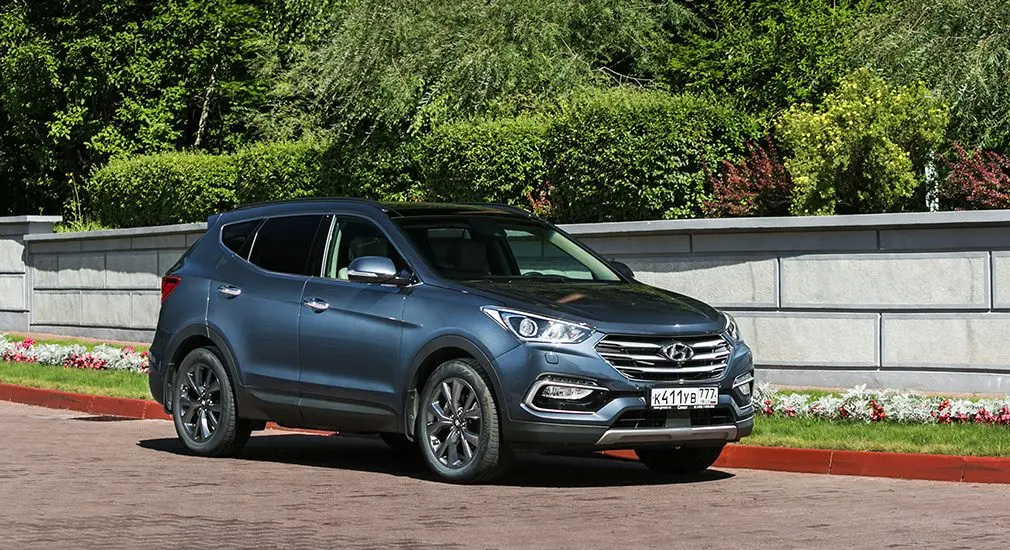
With interiors, the situation is exactly the opposite. Santa Fe meets with sweeping lines, a complex structure of panels, deep wells of devices and unusual shapes of ventilation deflectors. The stylists seem to have lost a little sense of proportion, but there are no questions about the quality of the finish, and you can easily understand the placers of the keys. The control of on-board systems is assigned to analog buttons and handles, and this is completely customary.
Koleos inside, on the contrary, is as restrained as possible and almost completely digitalized. Instead of a speedometer, there is a wide colorful display with several design options, on the console there is a multimedia system tablet familiar from European models, into which most of the functionality is sewn, except for some functions of the air conditioning system. It works oddly in French, but techies will love the ability to personalize the media system and customize the menu screens.
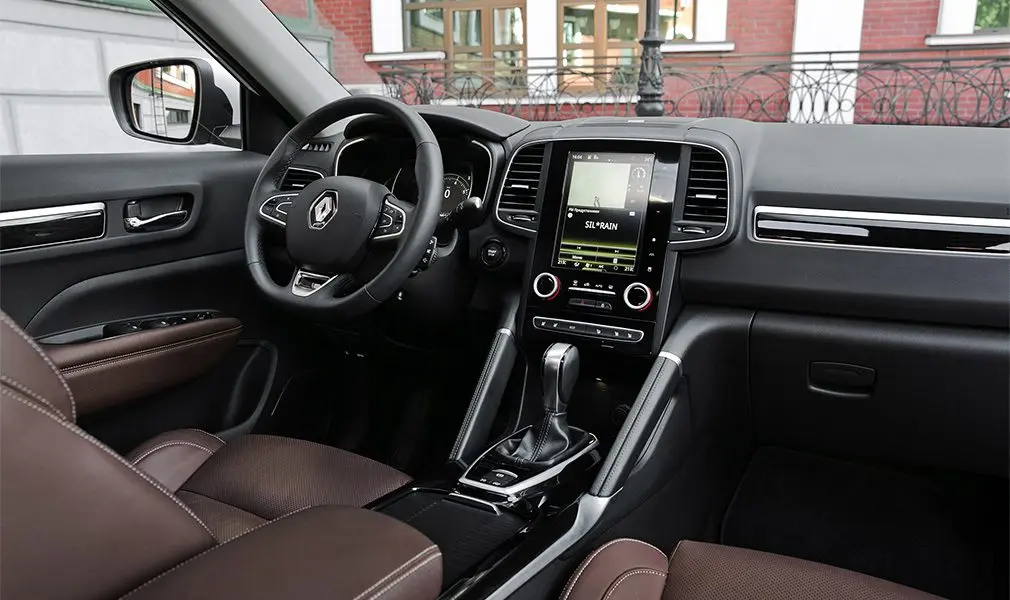
The Koleos interior is tastefully decorated and evokes quite premium associations: soft leather, pleasant-to-touch plastic, a comfortable steering wheel truncated from below and an absolutely clear arrangement of the main keys and levers. Against this background, the set of power windows without automatic mode is very surprising, although the car has, for example, ventilation of the front seats or a heated steering wheel. However, Santa Fe has not only these options in the older trim levels, but also something else. For example, all-round cameras, lane and blind spot monitoring systems, which Renault does not offer for its flagship.
From the driver's point of view, the Koleos is more modern, the Santa Fe is more comfortable. The Korean crossover has the correct fit and almost reference seats with optimal padding. Renault Koleos short seats are also not very well shaped with persistent support in the upper part of the backrest. Passengers have a different alignment: Hyundai convertible sliding chairs versus Renault's spacious sofa, on which adult passengers can sit cross-legged. The Koleos has wider doors and taller roofs, heated rear row, separate vents and USB charging outlets. Santa Fe partly parries only deflectors in the body pillars and roomy door pockets.
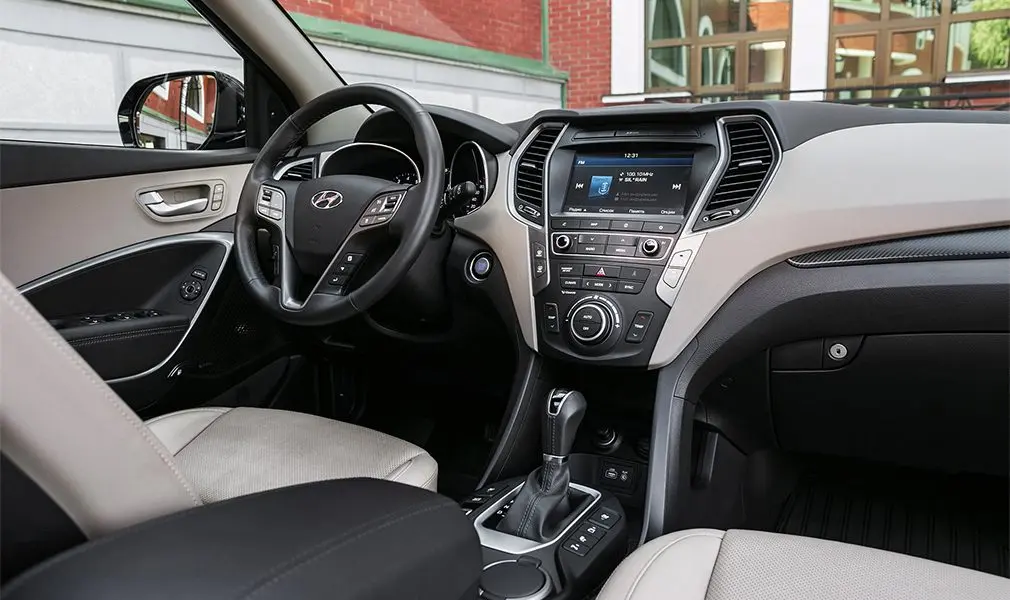
Apparently, the Koreans set their priorities a little differently, giving a few centimeters to the luggage compartment. It is not only deeper and more voluminous than the competitor, but also has a spacious underground with an organizer, a transformer floor and a separate compartment for stowing a folded luggage cover. The French car does not offer anything, except for a simple loading area with two modest niches on the sides, but it has a system for opening the trunk lid with a swing of the foot.
Another interesting option is the ability to remotely start the engine with a key or timer. This is nice, especially considering the fact that there is a cold diesel engine in the Koleos range. But this is an expensive option, and the optimal for such a car seems to be a gasoline 2,5 liter with a capacity of 171 hp, which is paired with a variator. Compared to the basic two-liter engine, it is not bad, and nothing more.
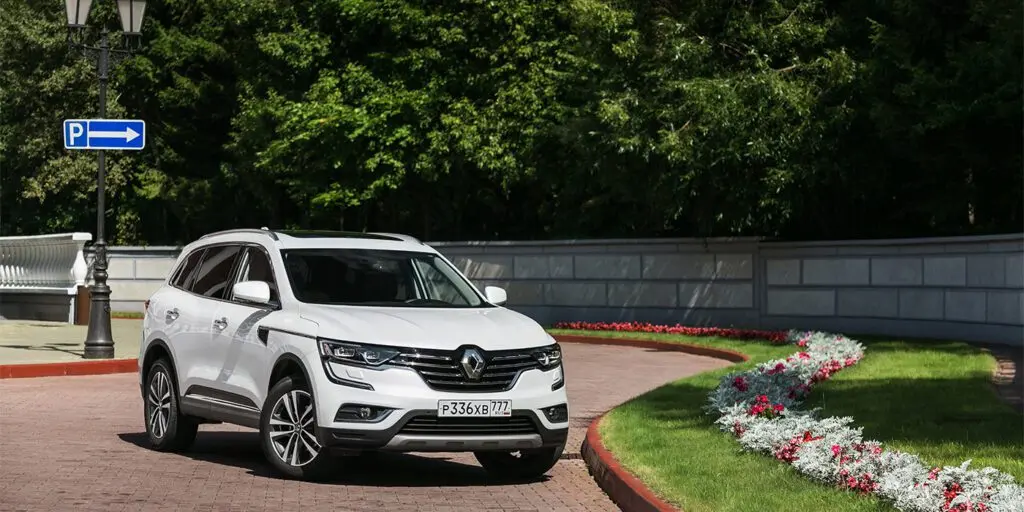
The naturally aspirated four-cylinder has variable valve timing, but doesn't make the Koleos fast. The crossover confidently accelerates and goes overtaking, and the variator, with intensive acceleration, diligently imitates seven fixed gears, but the car still responds to the accelerator with laziness. In standard modes, everything is even easier - stable, but not bright acceleration under the monotonous howl of the engine.
After reseeding in a Hyundai Santa Fe, you realize that in reality everything is not so bad. The 2,4-liter Hyundai gasoline engine produces the same 171 hp, but the luck is pretty boring even taking into account the fact that the Korean crossover has a normal 6-speed "automatic". Official 11,5 s to "hundred" is a lot by modern standards. The change of modes with the Drive Mode key does not change much the picture. The six-speed "automatic" even in sport mode works imposingly, making shifting comfortable above all.
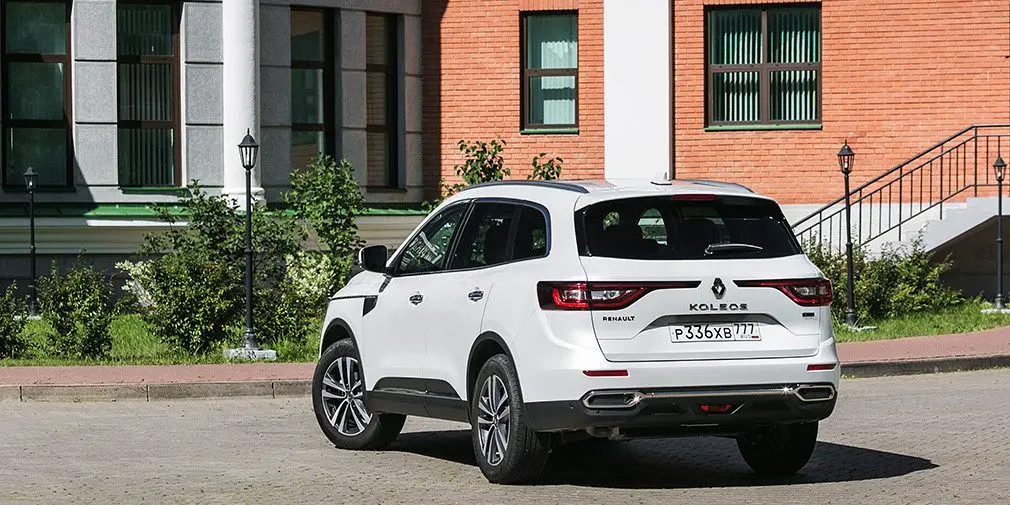
Quiet track mode for both cars seems ideal - they stand perfectly in a straight line and are good at isolating outside noise. And if Santa Fe, during active acceleration, annoys a little with the roar of the engine, then Koleos, even in such modes, carefully protects the peace of the passengers. On a good road, Hyundai is a little tougher and more collected, and Renault is smoother and more imposing, on a bad Koleos it becomes nervous and uncomfortable, and Santa Fe frightens with stiffness and tangible vibrations of heavy suspensions.
Another thing is that the chassis of the "Korean" seems almost impenetrable and does not lock on bumpers, as in Koleos, so it is easier to drive on a dirt road on it. The Santa Fe's ground clearance is low - a modest 185 mm - which, in combination with the low skirt of the front bumper, does not allow us to sharply storm the excesses of the primers. And where powertrain capabilities are more important, Hyundai is very confident, as the rear wheel drive clutch can be locked and the ESP can be completely disabled.
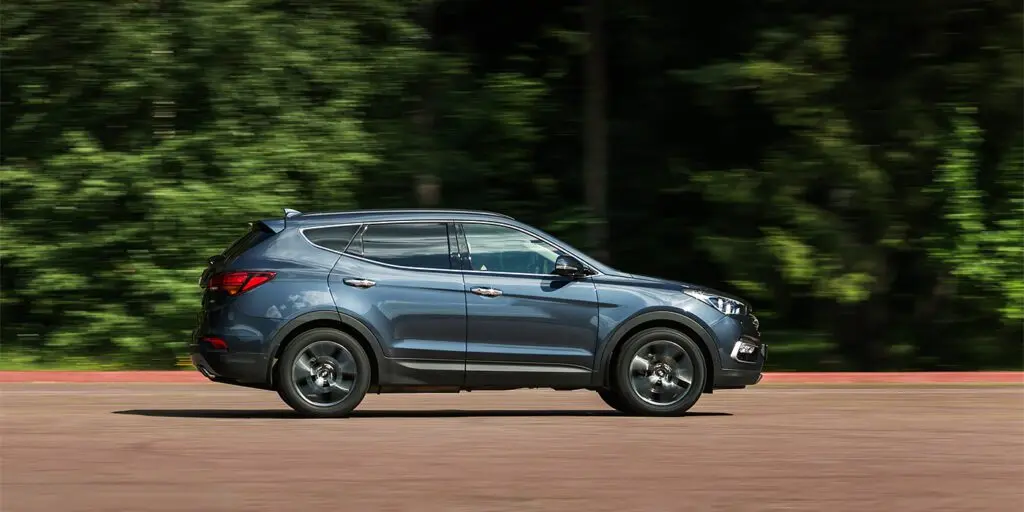
On dry slopes of decent steepness, the Koleos also rides without problems. Due to the long front bumper, the car has a rather modest approach angle, but a decent ground clearance of 210 mm helps out. All-wheel drive transmission All Mode 4 × 4-i has a mode of forced blocking of the center clutch, but it is worth using it, perhaps, only when driving on slopes, since without "blocking" the assistant will not turn on the descent from the mountain. And where it is necessary to slip, problems arise - either the variator quickly overheats and turns on the emergency mode, or the disabled ESP spontaneously turns back on, preventing the dirt from mixing normally.
Renault Koleos is good precisely as a family car, and it needs four-wheel drive and high ground clearance, rather, for greater versatility. In terms of the market, he still looks like a rookie, and that gives him an areola of some exclusivity and a product that is out of the ordinary. The outgoing Hyundai Santa Fe is not new, but it can fully exploit its own brand, well known since the late 1990s. We can say that this is a completely modern European car, which remains so even on the eve of the premiere of a new generation model.
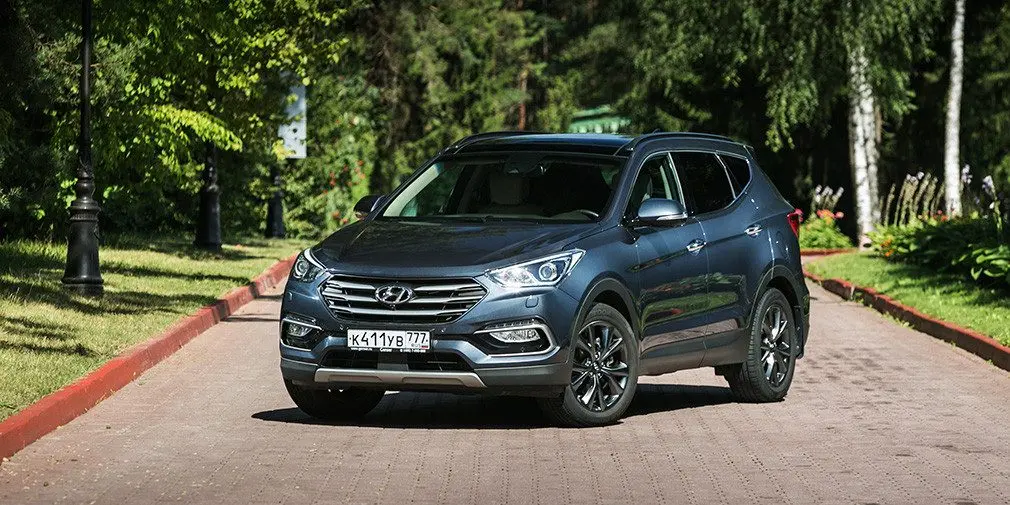
If you have to get used to the French crossover, then the Korean one seems in many ways familiar, and its set of equipment looks somewhat more logical and flexible. Perhaps that is why, all other things being equal, it turns out to be more expensive than Koleos, especially if you make a choice not between gasoline, but diesel modifications. And in any case, it is worth remembering that the safety of expensive rear passengers is still entrusted to the driver, since both Renault and Hyundai have the ability to pre-lock the rear doors.
| A type | Crossover | Crossover |
| dimensions (length / width / height), mm | 4672/1843/1673 | 4690/1880/1680 |
| Wheelbase, mm | 2705 | 2700 |
| Curb weight, kg | 1607 | 1793 |
| engine's type | Gasoline, R4 | Gasoline, R4 |
| Working volume, cubic meters cm | 2488 | 2359 |
| Power, hp with. at rpm | 171 at 6000 | 171 at 6000 |
| Max. torque, Nm at rpm | 233 at 4400 | 225 at 4000 |
| Transmission, drive | CVT full | 6-st. Automatic gearbox, full |
| Maksim. speed, km / h | 199 | 190 |
| Acceleration to 100 km / h, from | 9,8 | 11,5 |
| Fuel consumption (city / highway / mixed), l | 10,7/6,9/8,3 | 13,4/7,2/9,5 |
| Cargo space, l | 538-1607 | 585-1680 |
| Price from, $. | 26 653 | 25 423 |
The editors would like to express their gratitude to the administration of Imperial Park Hotel & Spa for their help in organizing the shooting.
